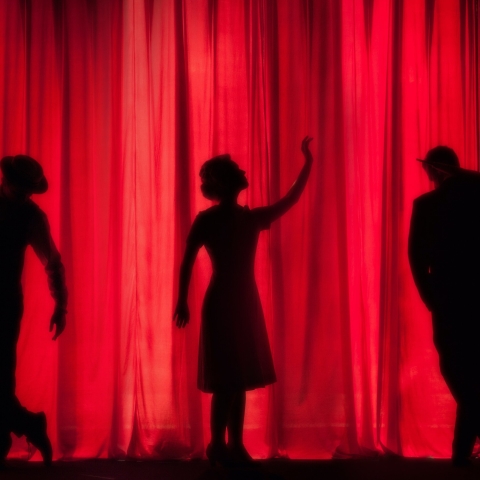The Japanese director Takashi Miike’s latest film, Lumberjack the Monster, has been released on Netflix with little to no fanfare). Producing over 100 theatrical releases since his debut in 1991, the film sees Miike return to the horror genre for the first time in over a decade – a genre he was renowned for in the late 1990s and early 2000s.
In this latest offering, a psychotic lawyer survives an attack by a serial killer. While concealing his own murderous tendencies, he tries to get revenge on his assailant.
True to Miike’s standard horror form, this is a violent take on the police procedural drama. He revels in the horrific, blood-spattered details and presenting morally ambiguous characters.
Along with other directors from Asia, his films were released to the western market by DVD brand Tartan under the label Asia Extreme in 2001. These films straddled a line between extremity and shock. They were overflowing with violence, gore and transgression but had a distinct arthouse aesthetic. Such juxtaposition of violence with beautifully framed imagery makes for compelling, unsettling viewing.
Since the mid-2000s Miike has most noticeably been producing chanbara, or sword-fighting films, finding a home for his violent imagery in Japan’s feudal past. He has turned his directorial vision to remaking seminal films such as 13 Assassins and Harakiri. He is also known for his yakuza (Japanese gangster) films, another genre that marries well with his aesthetic. This can be seen most famously in Ichi the Killer and the more recent Yakuza Apocalypse.
In recent years, there has been a departure from the more transgressive side of his filmmaking, adapting manga (Jojo’s) and producing family-oriented entries into the Yokai monster franchise – a series of horror films that features Japanese folkloric monsters.
Takashi Miike’s films aren’t for everyone. They push boundaries and levels of taste, designed to shock and repulse. Full of fountains of blood and intense set pieces they are also meditations on the human condition and the cruelty of the everyday. Lumberjack the Monster is a worthy entry into Miike’s extensive filmography and a perfect excuse to delve into the films that made his name infamous over two decades ago. Here are five to get you started.
1. Audition (1999)
Arguably Miike’s most remembered and revered film. A widower, Shigeharu, stages a fake theatrical audition, with the real purpose of finding a romantic partner. When his chosen applicant, Asami, finds out his deception, punishment ensues.
The gorier set pieces are masterfully staged and shocking to watch. Asami quietly chirping “kiri-kiri-kiri” (deeper, deeper, deeper) while inserting needles into Shigeharu’s eye socket is one of the most disturbing sequences in cinema, in my opinion.
Audition had a clear influence on the Canadian filmmakers the Soska sisters and their female-centric narratives as well as the torture porn aesthetic of the American filmmaker Eli Roth, known for films like Cabin Fever (2002) and Hostel (2005).
2. Visitor Q (2001)
Potentially the most controversial and transgressive of Miike’s films. Shot on digital cameras, the film has a home movie aesthetic that makes the content all the more troubling.
It focuses on a visitor entering a dysfunctional family’s home, leading the inhabitants to reveal their secret desires and instigating the debauchery that ensues. Containing incest, lactation, violence, murder and necrophilia, this is Miike’s diatribe on the importance of the family unit.
3. MPD Psycho (2000)
Grotesque in its approach, this miniseries is adapted from the manga of the same name. It follows a police officer trying to catch a criminal who buries people and turns them into plant pots and removes foetuses from pregnant women, replacing them with mobile phones.
Miike blurs the imagery in places, commenting on the censorship in Japan, letting the audience’s minds run wild with what the blur could be concealing. This film is the closest in form to Lumberjack’s manipulation of the police procedural drama.
3. The Happiness of the Katakuri’s (2001)
Miike blends the zombie film with a musical.
A family running a hotel have a series of guests die in unfortunate circumstances. Instead of reporting these for fear of ruining their reputation, they bury the bodies. These guests aren’t quite ready to check out.
Full of fantastical songs, dance sequences and unsettling claymation interludes, this is as bizarre and funny as it sounds. A more palatable entry in the oeuvre of Miike that reflects on family values while playing with the horror formula, creating a mashup of The Sound of Music and Shaun of the Dead.
4. Three… Extremes (2004)
An anthology film consisting of three shorts that bring together directors from Hong Kong (Fruit Chan), South Korea (Park Chan-Wook) and Japan. Miike’s entry, Box, is a slight departure from his other films on this list.
Emphasising mood over shock tactics, the short shows a woman reflecting on her past relationship with her twin sister when they performed in her father’s magic show. The transgressive is still present, with allusions to incest and paedophilia, but not directly addressed. Semi-abstract in places, and made up of some mesmeric imagery, this is an often-overlooked entry in Miike’s output.
Andrew Russell, Lecturer, Faculty of Creative & Cultural Industries, University of Portsmouth
This article is republished from The Conversation under a Creative Commons license. Read the original article.




